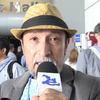Explore all the information on
Avian influenza
Avian influenza is a viral infection found in domestic poultry and a wide range of other birds. Wild waterfowl and shorebirds are often subclinically affected carriers of the virus. In poultry, low-pathogenicity strains can cause subclinical infections; however, some strains typically cause respiratory signs or decreased egg production. Highly pathogenic strains may cause widespread organ failure and sudden death, often with high mortality rates. Diagnosis is based on detection of the viral genome or specific antibodies or on virus isolation. Antimicrobials may help control secondary bacterial infection in flocks affected by low-pathogenicity strains. Antiviral drugs are not approved or recommended. Prevention is best accomplished by biosecurity measures. Vaccines matched for antigenic type can greatly increase resistance to infection, prevent clinical signs, and decrease viral shedding in infected flocks.
1 | INTRODUCTION Water is the source of life on the earth and it seems that without water, life is inconceivable. Unlike humans, who can produce and retrieve the necessities of life by increasing their knowledge, birds rely more on the water in nature, and unfortunately, any changes affecting the quantity and quality of water in geographical areas of the world including Urmia Lake, affects the lives of birds. The ecological level of the Urmia lake water is 1274.10 m/12.546 Bm3...
Comments : 0
Recommendations: 0
Avian influenza virus (AIV) belongs to Orthomyxoviridae family and is characterised by containing negative-sense, single-stranded RNA genome of 8 segments that encode for 10 structural and at least 9 nonstructural/regulatory proteins. Hemagglutinin (HA) and neuraminidase (NA) that are the most abundant and immunogenic surface protein, and are involved in virus entry and exit from the cell. There are 18 hemagglutinin and 11 neuraminidase subtypes that are known to exist in the nature, and all...
Comments : 0
Recommendations: 0


An impact of Deoxynivalenol produced by Fusarium graminearum on broiler chickens
Suggested link
Avian influenza viruses (AIVs) are classified as either low-pathogenicity (LP) or high-pathogenicity (HP). LPAIVs generally cause mild infections, whilst HPAIVs can cause high mortality in a wide range of avian species. AIV subtypes are defined based on their surface glycoproteins, haemagglutinin (HA; H1-H16) and neuraminidase (NA; N1-N9), and HPAIVs appear restricted to the H5 and H7 subtypes. HPAI viruses are of major concert for their pandemic potential and the impact of the socioeconomic...
Comments : 0
Recommendations: 0
As a consumer of eggs, it's hard not to notice the spike in their prices. While we are still recovering from the increase in food costs due to the pandemic, eggs have become more expensive as well. The media has been abuzz with this issue. It's clear that rising food costs impact many people, with eggs being a staple in many households. Eggs...
Comments : 0
Recommendations: 0
Dr. Alejandro Garcia, Research and Development for Avilab, speaks about avian influenza and also about maternal antibodies at the XVII World Veterinary Poultry Association Congress in Cancun, Mexico. ...
Comments : 1
Recommendations: 1
Introduction Nepal’s poultry industry has seen a significant and rapid growth in the last decade, contributing more than 4% to the national gross domestic product (GDP) [1,2]. Majority of the poultry products are supplied by numerous commercial farms (54% of total poultry production) scattered throughout the country. Backyard poultry also accounts for significant proportion of the total poultry production (46%); poultry meat and eggs are an easy source for protein and...
Comments : 0
Recommendations: 1
The commercial poultry industry is concerned about the continued spread of Avian Influenza (AI) and is closely watching as this disease is found in more countries around the world. Almost daily we receive reports that there are more outbreaks here or there in different media. We see these reports in digital newspapers, television, radio, and this time we are bombarded with more ads on WhatsApp, Twitter, Facebook, TikTok, Instagram, Telegram, etc. In many cases, we do not know the source of...
Comments : 1
Recommendations: 3
Shawna Weimer (University of Arkansas and Poultry Extension Collaborative) talks about the transition to cage-free production and consumer preferences, as well as enrichments and stunning, in this interview during IPPE 2023 in Atlanta, USA....
Comments : 0
Recommendations: 0
A highly pathogenic strain of Avian Influenza (sometimes called bird flu) is currently spreading across the United States. The virus has been detected in six States since January 2022 (see Figure 1). Avian influenza: about the...
Comments : 0
Recommendations: 0
Drinking water is one of the transmission methods of Avian Influenza (AI). Water sources can be contaminated by infected materials and transmitted to poultry farms. The risk of the chicken being exposed to the virus via water is high. When AI hit the poultry industry in the US in 2015, water samples were tested positive for the virus. Taking samples from poultry drinking water lines is an efficient way to conduct avian influenza surveillance. Water treatment is an important control strategy...
Comments : 0
Recommendations: 2
Chanelle Taylor (Cargill) talks to Sam Shafer (PSA) about Highly Pathogenic Avian Influenza (HPAI) and how it has severely impacted the poultry industry's birds, products, and the mental health of workers. Let's Squawk About It is a monthly interview segment by the Poultry Science Association....
Comments : 0
Recommendations: 0
Sampling chicken in rural Nepal to screen for Newcastle and Influenza A virus....
Comments : 0
Recommendations: 0
.jpg&w=3840&q=75)

Introducing Afla-V ONE: Fast, precise aflatoxin detection for complete feeds and pet foods
Suggested link
by Sam Shafer
Disinfecting vehicle surfaces appears to help control viral spread
In 2016 and 2017, duck farmers in France faced the grim reality of having to depopulate their flocks due to avian influenza outbreaks. A study conducted at the time showed that the trucks and crates used for bird transport during this disease-control effort were often not decontaminated correctly.
In 2020 and 2021 came another wave of...
Comments : 0
Recommendations: 0
Bob Christie / Associated Press
Arizona officials have confirmed the first cases in the Southwest of a bird flu that has led to the deaths of 37 million birds from commercial farms in the central and eastern U.S.
The disease was spotted after tests by federal wildlife officials on three wild cormorants that had been found dead in a park in Scottsdale, Arizona Game & Fish Department officials announced this week.
The disease has not yet been found...
Comments : 0
Recommendations: 0
Dr. Stephen Adejoro (Livestock Industry Foundation for Africa) shares with Engormix members his thoughts on how to prevent an outbreak in developing countries....
Comments : 0
Recommendations: 2
By Carly Alyse Mirabile for CAES News
According to the Centers for Disease Control and Prevention , new outbreaks of avian influenza (flu) have been detected in U.S. aquatic birds, commercial poultry and backyard flocks since January. Although avian influenza is not a threat to human health or food safety in Georgia, avian flu presents a risk to all poultry operations, from...
Comments : 0
Recommendations: 0
Introduction Exosomes are membrane vesicles, approximately 40–100 nm in diameter, and present in most biological fuids [1–3]. Exosomes are derived from multivesicular bodies (MVBs) to form intraluminal vesicles (ILVs), which are then released into the extracellular environment as exosomes after fusion with the plasma membrane [3]. Lipids and proteins are the main components of exosomes and various nucleic acids, such as mRNAs, microRNAs (miRNAs), and other...
Comments : 0
Recommendations: 0


An impact of Deoxynivalenol produced by Fusarium graminearum on broiler chickens
Suggested link
1. Introduction Low pathogenicity avian influenza virus (LPAIV) subtype H9N2 is the most prevalent LPAIV in poultry in the world [1–3]. Although wild waterfowl are the natural host of avian influenza, H9N2 is a relatively uncommon subtype in wild birds. The first H9N2 virus in domestic poultry was isolated from turkeys in the 1960s in the United States of America (USA) and only sporadic reports from poultry were reported until the 1990s [4]. In the mid-1990s H9N2 was first...
Comments : 0
Recommendations: 0
by Sam Shafer
Avian influenza outbreaks in the United States are rare, but when the virus strikes, the results are devastating. The disease spreads very rapidly, and producers must rely on quarantine-and-cull to try to limit the damage. A 2015 outbreak led to an estimated loss of over 48 million birds.
While there are vaccines to prevent avian influenza, it would be very challenging to administer them via inject to entire flocks. Adding to the problem, the...
Comments : 1
Recommendations: 2

















.jpg&w=3840&q=75)












